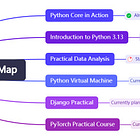Master 10 Essential Skills for Python Data Visualization (Practical Data Analysis 10)
Learn 10 Python data visualization techniques with Matplotlib & Seaborn. Explore scatter plots, heatmaps, pairplots, and more for effective EDA!
Welcome to the "Practical Data Analysis" Series
Today, I’ll walk you through Python’s visualization techniques.
If you want to use Python for data analysis, you need to start exploratory data analysis (EDA) early in the project. This helps you understand the data better.
The most intuitive way is to use data visualization techniques. This makes the data not only clear at a glance but also easier to interpret.
Likewise, after deriving results from data analysis, visualization techniques are essential for presenting the final outcomes.
Types of Visualization Views
Based on relationships between data, visualization views can be categorized into four types: comparison, relationship, composition, and distribution. Let me briefly introduce the characteristics of each:
Comparison: Comparing relationships among categories of data or their trends over time, such as line charts.
Relationship: Observing relationships between two or more variables, such as scatter plots.
Composition: Showing the percentage of each part in the whole, or changes in percentage over time, such as pie charts.
Distribution: Focusing on the distribution of a single variable or multiple variables, such as histograms.
Additionally, based on the number of variables, visualization views can be divided into univariate analysis and multivariate analysis.
Univariate analysis focuses on one variable at a time.
For example, focusing only on the variable "height" to observe its value distribution while ignoring other variables.
Multivariate analysis allows you to examine relationships among two or more variables in a single plot.
For instance, analyzing the "height" and "age" of individuals together in one chart can help determine if there’s a relationship between these variables.
Visualization views are highly diverse. Today, I’ll mainly introduce 10 common types, including scatter plots, line charts, histograms, bar charts, box plots, pie charts, heatmaps, spider plots, bivariate distributions, and pair relationships.
Let’s go over them one by one.





